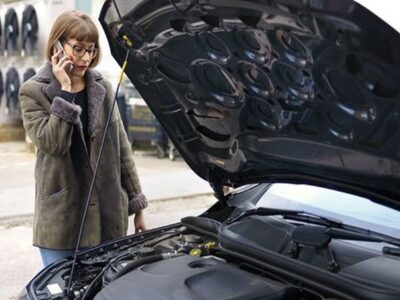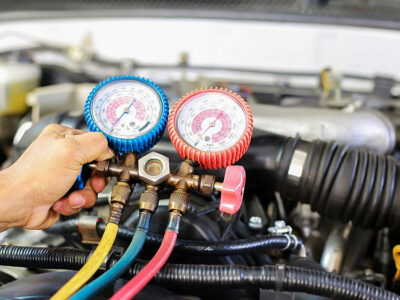
Classic cars are admired for their timeless design, unique character, and rich history. They evoke a sense of nostalgia for a bygone era when cars were built with style and craftsmanship. However, they also come with a heavy environmental cost due to their gas-guzzling engines and lack of modern emissions controls. As the world becomes more aware of the impact of carbon emissions on the environment, the need for eco-friendly classic cars is becoming increasingly pressing. In this article, we’ll explore the latest trends in eco-friendly classic car design and the challenges that come with balancing sustainability and nostalgia.
Why Classic Cars Need To Be More Eco-Friendly
Classic cars have a special place in the hearts of enthusiasts and collectors around the world. They are more than just machines; they are works of art that represent a particular era in automotive history. However, the reality is that classic cars are not environmentally friendly. They were built in a time when fuel efficiency and emissions controls were not a priority, and as a result, they contribute significantly to air pollution and climate change.
In recent years, there has been a growing movement to make classic cars more eco-friendly. One of the main reasons for this is that many cities and countries are introducing stricter emissions regulations that make it difficult for classic cars to be driven on public roads. This has led to a surge in interest in eco-friendly modifications for classic cars that allow them to meet these regulations while still retaining their unique character.
Another reason for the push towards eco-friendliness in classic cars is that many enthusiasts are becoming more aware of the impact of their hobby on the environment. They want to enjoy their classic cars without contributing to the problems of air pollution and climate change.
Eco-Friendly Classic Car Modifications
There are a variety of modifications that can be made to classic cars to make them more eco-friendly. Some of the most popular include engine upgrades, electric conversions, hybrid engines, and biofuels.
Engine Upgrades for Eco-Friendliness
One of the most common modifications for eco-friendly classic cars is upgrading the engine. This can involve replacing the carburetor with a fuel injection system, installing a more efficient exhaust system, or adding an electronic ignition. These upgrades can improve fuel efficiency and reduce emissions without compromising the performance or aesthetics of the car.
Another option is to install a smaller, more efficient engine. This can significantly reduce fuel consumption and emissions, but it may require modifications to the transmission and other components to ensure that the car still has adequate power and performance.
The Role of Electric Power in Classic Cars
Electric conversions are becoming increasingly popular among classic car enthusiasts. This involves replacing the gasoline engine with an electric motor and battery system. While this may seem like sacrilege to some purists, it has a number of benefits. Electric motors are much more efficient than gasoline engines, and they produce zero emissions. This means that an electric classic car can be driven without contributing to air pollution or climate change.
One of the biggest challenges with electric conversions is finding a battery system that can provide adequate range and performance. Classic cars were not designed to accommodate the heavy batteries required for electric power, so modifications to the chassis and suspension may be necessary.
Eco-Friendly Materials for Classic Car Restorations
Another way to make classic cars more eco-friendly is to use sustainable and renewable materials in their restoration. This can include materials such as bamboo, cork, and recycled plastics. These materials are not only more eco-friendly than traditional materials, but they can also add a unique and modern touch to classic car interiors.
Eco-Friendly Paint and Coatings for Classic Cars
Traditional automotive paint and coatings can be quite harmful to the environment due to the chemicals and solvents they contain. However, there are now eco-friendly alternatives available. These paints and coatings are made with natural and non-toxic materials and are much less harmful to the environment. They can also provide a unique and vibrant finish to classic cars. The builders of old land rover defender often have various steps to this process like many other classic vehicles.
Eco-Friendly Accessories for Classic Cars
There are a variety of eco-friendly accessories that can be added to classic cars to make them more sustainable. For example, solar-powered battery chargers can be used to charge the battery in an electric conversion, reducing the reliance on grid power. Recycled rubber floor mats and seat covers can add a touch of sustainability to the interior of a classic car.
The Future of Eco-Friendly Classic Cars
The future of eco-friendly classic cars is bright. As technology advances and more eco-friendly options become available, it’s likely that we’ll see more and more classic cars being modified to reduce their environmental impact. However, there are still some challenges to overcome. One of the biggest is the cost of eco-friendly modifications. Many of these modifications can be quite expensive, making them inaccessible to some enthusiasts.
Another challenge is ensuring that eco-friendly modifications don’t compromise the character and charm of classic cars. Many enthusiasts are wary of modifications that alter the original design or performance of their cars. Finding a balance between sustainability and nostalgia is crucial in ensuring that classic cars remain a beloved part of automotive history.
Conclusion
Eco-friendly classic cars are an exciting and growing trend in the automotive world. From engine upgrades to electric conversions and sustainable materials, there are a variety of modifications that can be made to classic cars to reduce their environmental impact. While there are still challenges to overcome, it’s clear that the future of classic cars is one that is both sustainable and nostalgic. As more and more enthusiasts and manufacturers embrace eco-friendly design, we can look forward to a future where classic cars are enjoyed without harming the environment.












